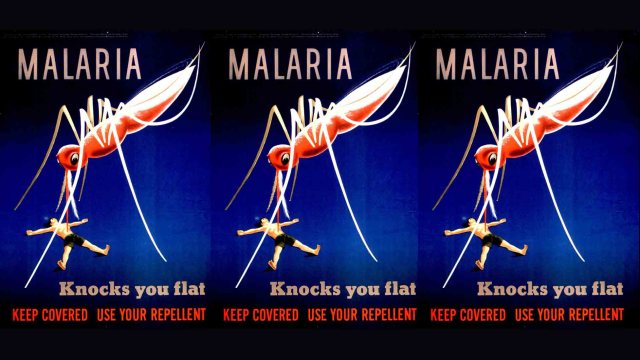Did Mars once have three moons?
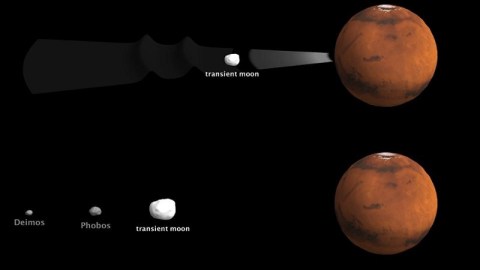
Phobos and Deimos may have had another, inner, much larger companion!
“The larger inner moons fall back to Mars after about 5 million years due to the tidal pull of the planet, after which the two outer satellites evolve into Phobos- and Deimos-like orbits.” –Pascal Rosenblatt, et al.
Mars’ two moons, Phobos and Deimos, are small, irregular, but orbit in the same equatorial plane as the red planet. Although they’ve long been thought to be captured asteroids, those orbits would be supremely unlikely. Another possibility would have been if a massive impact created a debris disk, similar to how Earth’s Moon was formed. That alternative creates equatorial orbits, but normally produces at least one very large moon. However, a new simulation was performed, showing how an impact could create three moons around Mars, where the largest, inner one decays, creating Martian system we see today.
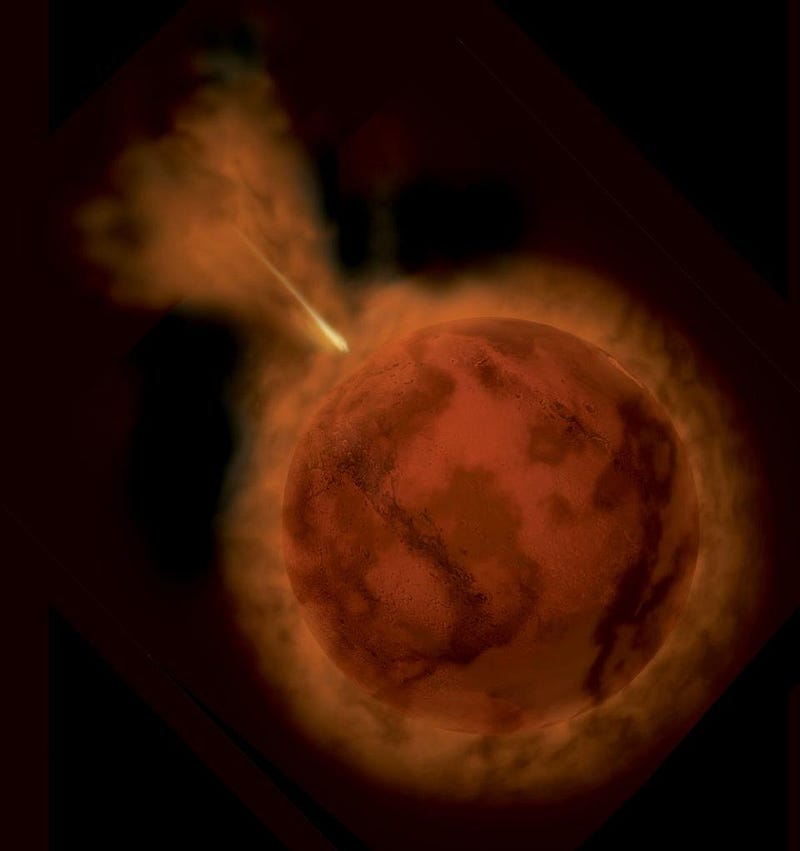
Our Moon may be what we grew up with, but it’s a cosmic oddity among the rocky planets. Of all the rocky worlds in our Solar System, it’s the only one with a large Moon. Mercury is moonless, Venus is moonless, and Mars only has the two very small moons, Phobos and Deimos, that orbit around it. Phobos and Deimos don’t resemble our own Moon; they’re just 22 and 12 kilometers across: small and oddly-shaped. Quite frankly, they look more like asteroids.
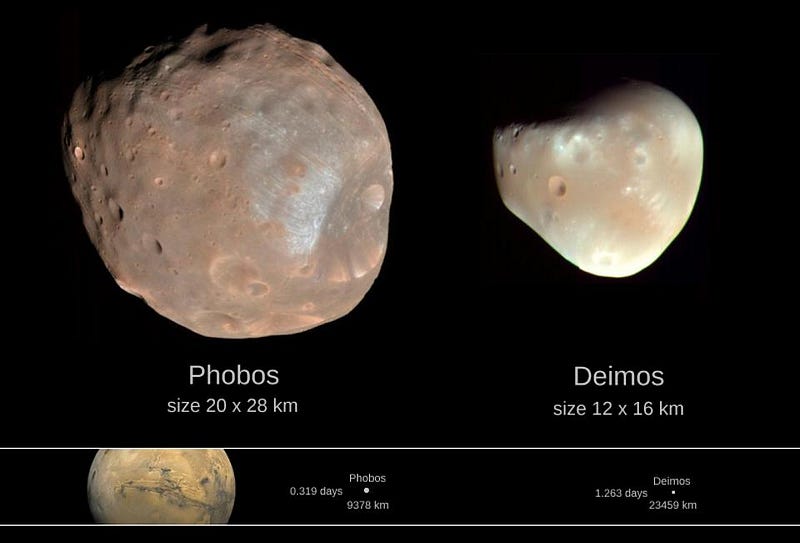
But gravitational capture of asteroids is completely random. They’re just as likely to orbit retrograde (the opposite direction) or at a high inclination as any other direction, and yet these two appear to be in nearly perfect circular orbits, and extraordinarily close to Mars to boot. Their compositions and appearances might be asteroid-like, but their orbits tell a different tale.
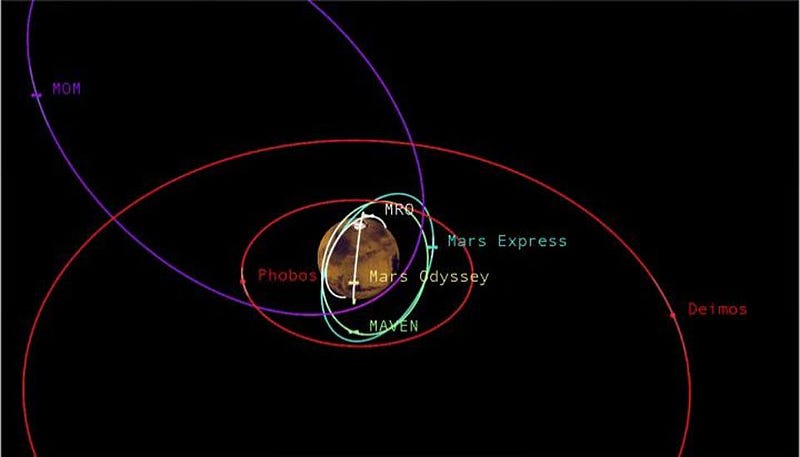
Circular orbits generally only come about when something formed a long time ago, from an initial disk configuration of some type of debris. Our planets are circular around the Sun because they formed from an early protoplanetary disk; the moons of the gas giants are circular because they formed from a circumplanetary disk around each of those worlds; our Moon has a near-circular orbit because it formed from a giant collision that created an enormous, massive disk around the Earth some 4.5 billion years ago.
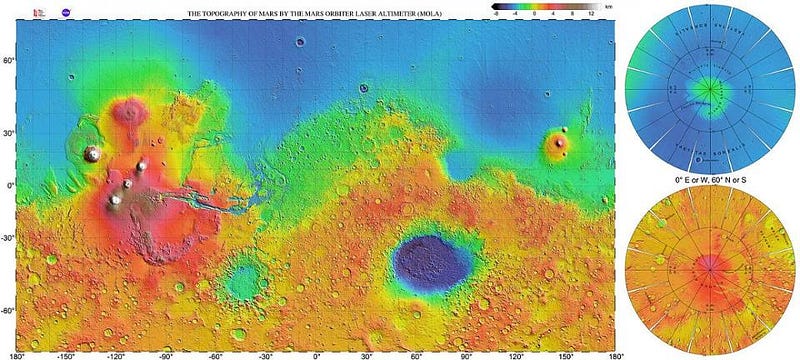
Mars, like many worlds in our Solar System, has written on its surface evidence of a history of tremendous impacts. Some are small, leaving modest craters, while others must have been tremendous, like the one responsible for Mars’ enormous Borealis basin. That impact must have occurred billions of years ago, but would have kicked up much more debris than would lead to two small moons. Yet Phobos, the larger and closer of the two, orbits at a distance of only 6,000 km from the surface Mars: the closest moon known in the Solar System. Deimos, at 23,000 km distant, is much farther but still very close.

In a paper published in the journal Nature Geoscience, however, a team led by Pascal Rosenblatt showed that the large impact creating this basic should have kicked up a dense disk of debris around Mars. Based on the impact parameters, a few thousand years is all it takes for a large, few-hundred-kilometer wide moon to form very close to the Martian surface, thanks to the dense disk region near the planet. The gravitational influence it has on the outer disk leads to instabilities, which could have created Phobos and Deimos, according to the simulations.

While the large Moon will be destined to be tidally destroyed and drawn to the surface through friction with Mars’ atmosphere after about five million years, the other two moons — made of a mix of the compositions of Mars’ surface and the impactor — could remain. Phobos and Deimos had a much larger sibling at some point in the past, but it may have lasted only for a few million years. After billions of years more, these two small moons remain. Perhaps in a few billion more, Phobos may be destroyed as well. If the new theory is right, a future scientist will only have Deimos and the basins on Mars to piece together this story from. It’s a stark reminder that in the Solar System and the Universe in general, the past is gone. All we have left to base its history on are the survivors.
Reference: Accretion of Phobos and Deimos in an extended debris disc stirred by transient moons, Pascal Rosenblatt et al., Nature Geoscience 9, 581–583 (2016).
This post first appeared at Forbes, and is brought to you ad-free by our Patreon supporters. Comment on our forum, & buy our first book: Beyond The Galaxy!





